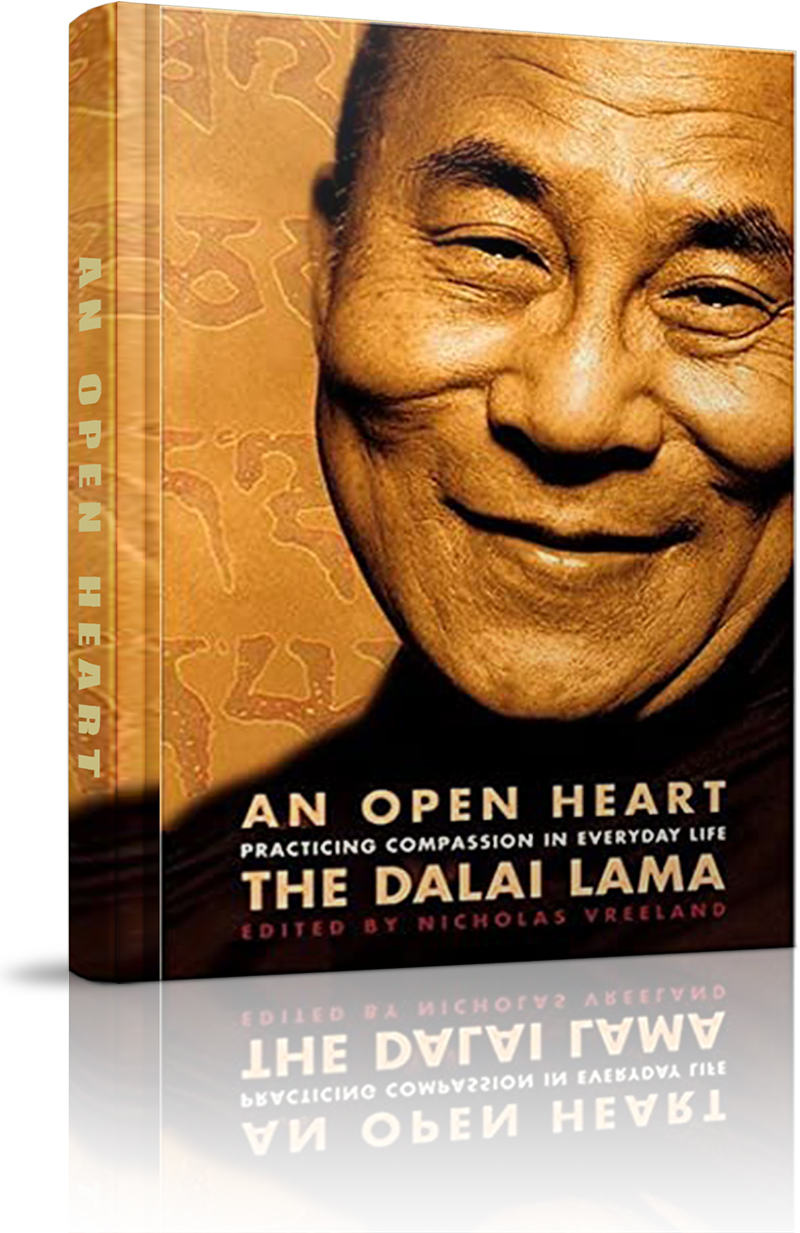Không nên nhìn lỗi người, người làm hay không làm.Nên nhìn tự chính mình, có làm hay không làm.Kinh Pháp cú (Kệ số 50)
Tinh cần giữa phóng dật, tỉnh thức giữa quần mê. Người trí như ngựa phi, bỏ sau con ngựa hènKinh Pháp cú (Kệ số 29)
Giữ tâm thanh tịnh, ý chí vững bền thì có thể hiểu thấu lẽ đạo, như lau chùi tấm gương sạch hết dơ bẩn, tự nhiên được sáng trong.Kinh Bốn mươi hai chương
Thật không dễ dàng để tìm được hạnh phúc trong chính bản thân ta, nhưng truy tìm hạnh phúc ở bất kỳ nơi nào khác lại là điều không thể. (It is not easy to find happiness in ourselves, and it is not possible to find it elsewhere.)Agnes Repplier
Kẻ thù hại kẻ thù, oan gia hại oan gia, không bằng tâm hướng tà, gây ác cho tự thân.Kinh Pháp Cú (Kệ số 42)
Người thực hành ít ham muốn thì lòng được thản nhiên, không phải lo sợ chi cả, cho dù gặp việc thế nào cũng tự thấy đầy đủ.Kinh Lời dạy cuối cùng
Mỗi ngày, hãy mang đến niềm vui cho ít nhất một người. Nếu không thể làm một điều tốt đẹp, hãy nói một lời tử tế. Nếu không nói được một lời tử tế, hãy nghĩ đến một việc tốt lành. (Try to make at least one person happy every day. If you cannot do a kind deed, speak a kind word. If you cannot speak a kind word, think a kind thought.)Lawrence G. Lovasik
Chúng ta không có khả năng giúp đỡ tất cả mọi người, nhưng mỗi người trong chúng ta đều có thể giúp đỡ một ai đó. (We can't help everyone, but everyone can help someone.)Ronald Reagan
Chúng ta trở nên thông thái không phải vì nhớ lại quá khứ, mà vì có trách nhiệm đối với tương lai. (We are made wise not by the recollection of our past, but by the responsibility for our future.)George Bernard Shaw
Chúng ta không học đi bằng những quy tắc mà bằng cách bước đi và vấp ngã. (You don't learn to walk by following rules. You learn by doing, and by falling over. )Richard Branson
Khó khăn thách thức làm cho cuộc sống trở nên thú vị và chính sự vượt qua thách thức mới làm cho cuộc sống có ý nghĩa. (Challenges are what make life interesting and overcoming them is what makes life meaningful. )Joshua J. Marine
Trang chủ »» Danh mục »» SÁCH ANH NGỮ HOẶC SONG NGỮ ANH-VIỆT »» An Open Heart »» Chapter 7: Compassion »»
An Open Heart
»» Chapter 7: Compassion
 Xem Mục lục
Xem Mục lục  Vietnamese || Đối chiếu song ngữ
Vietnamese || Đối chiếu song ngữ
- none
- Introduction
- Chapter One: The desire for happiness
- Chapter Two: Meditation - A beginning
- Chapter 3: The material and immaterial world
- Chapter 4: Karma
- Chapter 5: The afflictions
- Chapter 6: The vast and the profound: Two aspects of the Path
- »» Chapter 7: Compassion
- Chapter 8: Meditating on compassion
- Chapter 9: Cultivating equanimity
- Chapter 10: Bodhicitta
- Chapter 11: Calm abiding
- Chapter 12: The nine stages of calm abiding meditation
- Chapter 13: Wisdom
- Chapter 14: Buddhahood
- Chapter 15: Generating Bodhicitta
- Afterword (Khyongla Rato and Richard Gere)
- none

EMPATHY
In the first step toward a compassionate heart, we must develop our empathy or closeness to others. We must also recognize the gravity of their misery. The closer we are to a person, the more unbearable we find that person’s suffering. The closeness I speak of is not a physical proximity, nor need it be an emotional one. It is a feeling of responsibility, of concern for a person. In order to develop such closeness, we must reflect upon the virtues of cherishing the well-being of others. We must come to see how this brings one an inner happiness and peace of mind. We must come to recognize how others respect and like us as a result of such an attitude toward them. We must contemplate the shortcomings of self-centeredness, seeing how it causes us to act in unvirtuous ways and how our own present fortune takes advantage of those less fortunate.
It is also important that we reflect upon the kindness of others. This realization is also a fruit of cultivating empathy. We must recognize how our fortune is really dependent upon the cooperation and contributions of others. Every aspect of our present well-being is due to hard work on the part of others. As we look around us at the buildings we live and work in, the roads we travel, the clothes we wear, or the food we eat, we must acknowledge that all are provided by others. None of these would exist for us to enjoy and make use of were it not for the kindness of so many people unknown to us. As we contemplate in this manner, our appreciation for others grows, as does our empathy and closeness to them.
We must work to recognize our dependence on those for whom we feel compassion. This recognition brings them even closer. It requires sustained attention to see others through less self-centered lenses. We must work at recognizing their enormous impact on our well-being. When we resist indulging in a self-centered view of the world, we can replace it with a worldview that takes every living being into account.
We must not expect our view of others to change suddenly.
RECOGNIZING THE SUFFERING OF OTHERS
After empathy and developing closeness, the next important practice in our cultivation of compassion is an insight into the nature of suffering. Our compassion for all sentient beings must stem from a recognition of their suffering. One thing very specific to the contemplation of suffering is that it tends to be more powerful and effective if we focus on our own suffering and then extend that recognition to the suffering of others. Our compassion for others grows as our recognition of their suffering does.
We all naturally sympathize with someone who is undergoing the manifest suffering of a painful illness or the loss of a loved one. This is one kind of suffering, in Buddhism called the suffering of suffering.
It is more difficult to feel compassion for someone experiencing what Buddhists refer to as the suffering of change, which in conventional terms would be pleasurable experiences such as the enjoyment of fame or wealth. This is a second kind of suffering. When we see people enjoy such worldly success, instead of feeling compassion because we know that it will eventually end, leaving them to experience disappointment at their loss, often our reaction is to feel admiration and sometimes even envy. If we had a genuine understanding of suffering and its nature, we would recognize how the experience of fame and wealth are temporary and how the pleasure they bring will naturally end, causing one to suffer.
There is also a third and more profound level of suffering, which is the most subtle. We experience this suffering constantly, as it is a by-product of cyclic existence. It is in the nature of cyclic existence that we are continuously under the control of negative emotions and thoughts. And, as long as we are under their control, our very existence is a form of suffering. This level of suffering pervades our lives, sending us round and round in vicious circles of negative emotions and nonvirtuous actions. However, this form of suffering is difficult to recognize. It is not the evident state of misery we find in the suffering of suffering. Nor is it the opposite of our fortune and well-being, as we see in the suffering of change. Nevertheless, this pervasive suffering is most profound. It permeates all aspects of life.
Once we have cultivated a profound understanding of the three levels of suffering in our own personal experience, it is easier to shift the focus onto others and reflect upon these three levels. From there we can develop the wish that they be freed of all suffering.
Once we are able to combine a feeling of empathy for others with a profound understanding of the suffering they experience, we become able to generate genuine compassion for them. We must work at this continually. We can compare this process to the way in which we start a fire by rubbing two sticks together. To get to the smoldering point, we know that we must maintain a continuous friction to ratchet up the temperature to the point where the wood can catch fire. Similarly, as we work at developing mental qualities such as compassion, we must diligently apply the mental techniques necessary to bring about the desired effect. Going about this in a haphazard way is of no real benefit.
LOVING-KINDNESS
Just as compassion is the wish that all sentient beings be free of suffering, loving-kindness is the wish that all may enjoy happiness. As with compassion, when cultivating loving-kindness it is important to start by taking a specific individual as a focus of our meditation, and we then extend the scope of our concern further and further, to eventually encompass and embrace all sentient beings. Again, we begin by taking a neutral person, a person who inspires no strong feelings in us, as our object of meditation. We then extend this meditation to individual friends and family members and, ultimately, our particular enemies.
We must use a real individual as the focus of our meditation, and then enhance our compassion and loving-kindness toward that person so that we can really experience compassion and loving-kindness toward others. We work on one person at a time. Otherwise, we might end up meditating on compassion toward all in a very general sense, with no specific focus or power to our meditation. Then, when we actually relate this kind of meditation to specific individuals we are not fond of, we might even think, “Oh, he is an exception.”
MUA THỈNH KINH SÁCH PHẬT HỌC
DO NXB LIÊN PHẬT HỘI PHÁT HÀNH
Mua sách qua Amazon sẽ được gửi đến tận nhà - trên toàn nước Mỹ, Canada, Âu châu và Úc châu.
Quý vị đang truy cập từ IP 216.73.216.80 và chưa ghi danh hoặc đăng nhập trên máy tính này. Nếu là thành viên, quý vị chỉ cần đăng nhập một lần duy nhất trên thiết bị truy cập, bằng email và mật khẩu đã chọn.
Chúng tôi khuyến khích việc ghi danh thành viên ,để thuận tiện trong việc chia sẻ thông tin, chia sẻ kinh nghiệm sống giữa các thành viên, đồng thời quý vị cũng sẽ nhận được sự hỗ trợ kỹ thuật từ Ban Quản Trị trong quá trình sử dụng website này.
Việc ghi danh là hoàn toàn miễn phí và tự nguyện.
Ghi danh hoặc đăng nhập
... ...


 Trang chủ
Trang chủ










